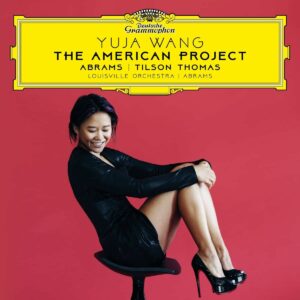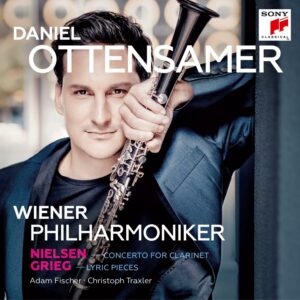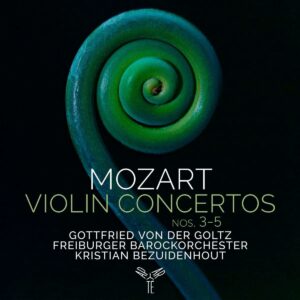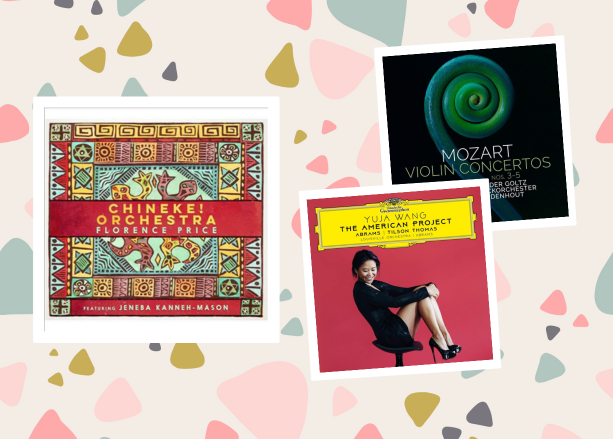October has brought us a gleaming array of new classical CDs that include well-known pieces, and music by composers who should be better-known. This blog looks at several new recordings of concertos for piano, clarinet, horn, and violin. Of particular interest are two new recordings of music by Florence Price (1887-1953), including Randall Goosby’s interpretation of Price’s violin concertos with the Philadelphia Orchestra, and Jeneba Kanneh-Mason’s performance of Price’s Piano Concerto in One Movement, accompanied by the Chineke! Orchestra.
Although Florence Price’s music is, at last, becoming more widely performed, more about her life should also be known. Price was one of the USA’s foremost twentieth-century composers, producing music in a variety of genres including chamber and orchestral works, concerti, piano and organ pieces, and a significant body of art songs. Born in Little Rock, Arkansas, Price first learned music with her mother before moving to Boston where she studied piano, organ, and composition at the New England Conservatory, one of the only American conservatoires that would admit African-American students at that time. Price then held several prestigious teaching posts at colleges in Little Rock and Atlanta and married in 1912.
In 1927, Price and her family moved to Chicago to escape the relentless and violent racial discrimination that prevailed in Arkansas. In Chicago, Price resumed composition study at the American Conservatory and Chicago Musical College, winning first prize in the 1932 Wanamaker Competition for her Symphony in E minor. The following year the Chicago Symphony Orchestra performed the work, the first time they played a piece by an African-American woman. However, while the CSO’s conductor, Frederick Stock, continued to support and promote Price, other leading figures in the musical establishment did not: between 1935 and 1944 Price wrote five times, with exceptional civility, to Serge Koussevitzky of the Boston Symphony, asking for consideration of her work. It appears that the conductor never replied to her personally – although two brief responses from an administrator and a secretary are extant – and never programmed Price’s music. Following Price’s death in 1953 she became, as musicologist Douglas Shadle describes, a ‘spectral composer‘ and it was only the chance rediscovery in 2009 of a chest full of music in manuscript and other documents that began the rediscovery of Florence Price. Since then, her music has been increasingly studied, performed, recorded, and appreciated, establishing Price among the luminaries of American art music.
Violin concertos by Max Bruch and Florence Price / Randall Goosby
Randall Goosby made his solo debut with the Philadelphia Orchestra in 2022, having already performed with many of North America’s major orchestras, as well as making concerto appearances elsewhere. In 2020 he signed an exclusive recording contract with Decca, and in 2021 his first recording with them, Roots, which champions the music of African-American composers was released to acclaim. He follows its success with this album, featuring Florence Price’s Violin Concerto No. 1 in D major (1939), and Violin Concerto No. 2 (1952), alongside Max Bruch’s Concerto in G minor. In all three pieces, Goosby demonstrates his absolute musical command, paired with a generous sound, and unencumbered by excess. One of his teachers and mentors is Itzhak Perlman, and the characteristic depth and richness of Perlman’s playing sometimes emerge in Goosby’s approach, but his interpretation of Bruch’s Concerto is entirely original. More significantly, the collaboration between Goosby, the Philadelphia Orchestra, and Yannick Nézet-Séguin, gives Price’s two concertos the exposure they merit, and it is fascinating to hear how her writing changed between 1939 and 1952. By way of an encore, Goosby also includes an arrangement of Price’s Adoration for strings.
Chineke! Orchestra / Price, Florence
Price’s Symphony No. 1 in E minor dates from 1932, and shows clearly how Price’s years of intensive study in Chicago, as well as her own experience and creative intuition came together in the creation of a magnificent first symphony. Much has been made of her choice of key, shared with that of Antonín Dvořák’s Symphony No. 9 ‘From the New World’ and her synthesis of a European Romantic musical language with ‘influences that are implicitly African American.’ However, there is no sense in the Symphony that Price’s musical ideas were derived from anywhere except her unique vision for the piece, realized through her imagination and technical command. Likewise, the Piano Concerto in One Movement (1934) is a work filled with revenants of nineteenth-century virtuosi, including Liszt and Mendelssohn, whose concerti the pianist Price was familiar with. At the same time, the Concerto is modern and inimitably American, reflecting the times in which it was composed. Chineke! Orchestra plays with commitment and verve throughout this recording, although occasionally in both the Symphony and Concerto with a little too much restraint. In contrast, Jeneba Kanneh-Mason demonstrates her absolute ease with Price’s Concerto, blending exacting crispness with an obvious and expansive enjoyment.
 The American project/Wang, Yuja
The American project/Wang, Yuja
This recording represents Yuja Wang‘s second big premiere recording of a new American work. In 2019 it was a new work by John Adams, Must the Devil Have All the Good Tunes, with the Los Angeles Philharmonic and Gustavo Dudamel. In March 2023, Deutsche Grammophon released The American Project, on which Wang performs a new Piano Concerto by Teddy Abrams alongside Michael Tilson Thomas’s You Come Here Often? There are many connections between the three artists involved in this recording: Abrams studied conducting at postgraduate level at the Curtis Institute of Music with Otto-Werner Mueller and Ford Lallerstadt while Wang was also a student there, studying piano with Gary Graffman. Both Abrams and Wang were mentored in their careers by Michael Tilson Thomas, and Abrams is now Music Director of the Louisville Orchestra (Kentucky), who play in the current recording. Abrams’s Concerto was originally conceived as a short companion piece to Gershwin’s Rhapsody in Blue but then developed into a full-scale Concerto. In the capable hands of Wang, whose performances of large-scale works by Prokofiev and Rachmaninoff blend razor-like technical precision with immense drama, Abrams’s Concerto takes on a life of its own that possibly exceeds what the work initially suggests. While the piece may not achieve the same status as Gershwin’s Rhapsody, Wang’s characteristic aplomb and wit should earn the Concerto a place in her regular repertory.
 Concerto for clarinet/Ottensamer, Daniel
Concerto for clarinet/Ottensamer, Daniel
Moving now from the United States to Northern Europe, two works by Norwegian and Danish composers: Daniel Ottensamer, Principal Clarinet of the Vienna Philharmonic Orchestra plays Grieg’s Lyric Pieces and Nielsen’s Concerto for Clarinet. Ottensamer is now well-known internationally as a chamber musician and soloist, in addition to his orchestral role, and here performs Neilsen’s Concerto with his ‘home’ orchestra. After the premiere of this Concerto in 1928, one review commented that Nielsen had ‘liberated the soul of the clarinet, not only the wild animal aspect but also its special brand of ruthless poetry …’ and these qualities are among those evidence in Ottensamer’s interpretation. His mastery of the technical challenges of the piece is exemplary, leaving the listener to experience how he deals with the mercurial musical personality of the piece and the variety of tone and attack it requires. In a generous selection of pieces from Grieg’s ten collections of Lyric Pieces, here arranged for clarinet and piano, Ottensamer works with pianist Christoph Traxler, with whom he also recorded works by Brahms and Weber. The clarinet is ideally suited to the lyrical and pastoral qualities of Grieg’s Lyric Pieces, and the duo somehow infuses Grieg’s Nordic clarity with an air of Viennese Gemütlichkeit.
 Violin concertos Nos. 3-5 / Mozart, Wolfgang Amadeus
Violin concertos Nos. 3-5 / Mozart, Wolfgang Amadeus
Violinist Gottfried von der Goltz is a professor of historical violin performance at the Freiburg Conservatory, and here records Mozart’s final three violin concertos, in G, D, and A major with the Freiburger Barockorchester, of which he is an Artistic Director. There exists no shortage of recordings of these works, but new approaches such as this one, directed from the fortepiano by Kristian Bezuidenhout, always offer beguiling insights into the rhetoric of Mozart’s creation. Here, the Freiburger Barockorchester plays with zest and occasional ferocity, the horns growling and rasping, while the strings sparkle and insinuate. The soloist offers a conundrum: his tone and attack often seem more typical as an approach to an earlier era of music, and sometimes the idiosyncracies and plethora of gestures sit at odds with the lyricism of Mozart’s writing. However, while initially sometimes startling, Gottfried von der Goltz’s execution of the solo lines begins to settle on the ear as he progresses through the three concerti. This recording offers, therefore, an enigmatic contribution to the discography.
Martin Owen plays Strauss, Schumann, Weber
Regarded as one of the leading French horn players in Europe, Martin Owen divides his time between his position as Principal Horn of the BBC Symphony Orchestra, and solo and chamber music engagements across Europe and North America. Prior to his appointment, Owen was Principal Horn of the Royal Philharmonic Orchestra, and also spent time as a Principal with the Berlin Philharmonic. In this recording of four glorious works for horn and orchestra by Richard Strauss, Robert Schumann, and Carl Maria von Weber, Owen performs alongside his BBC Philharmonic colleagues demonstrating his consummate command of a challenging instrument and challenging repertoire. A sense of joyousness pervades the entire CD, a mood established from the outset in the tumultuous Romanticism of Schumann’s Concertstück (1849) for four horns and orchestra in which Owen is joined by three soloists who are titans of the orchestral world: Christopher Parkes (Swedish Radio Symphony, Sinfonia of London), Alec Frank-Gemmill (Gothenburg Symphony Orchestra), and Sarah Willis (Berlin Philharmonic). In Weber’s Concertino (1811), Owen establishes a very different mood, evoking the world of Weber’s operas. In Strauss’s two concertos, Owen’s interpretation reflects the contrasting styles of the pieces: in Concerto No. 1 (1882-83) which the eighteen-year-old Strauss composed for his father Franz, the mood is buoyant and ardent, presaging the exuberance of the horn writing in Strauss’s tone poems. In Concerto No. 2, dating from 1942, and dedicated by Strauss to the memory of his father, Owen emphasizes the vocal qualities of the horn writing that connect the concerto with Strauss’s operas and songs. John Wilson draws accomplished playing from the BBC Philharmonic, the orchestra capturing the style of each concerto’s era.


